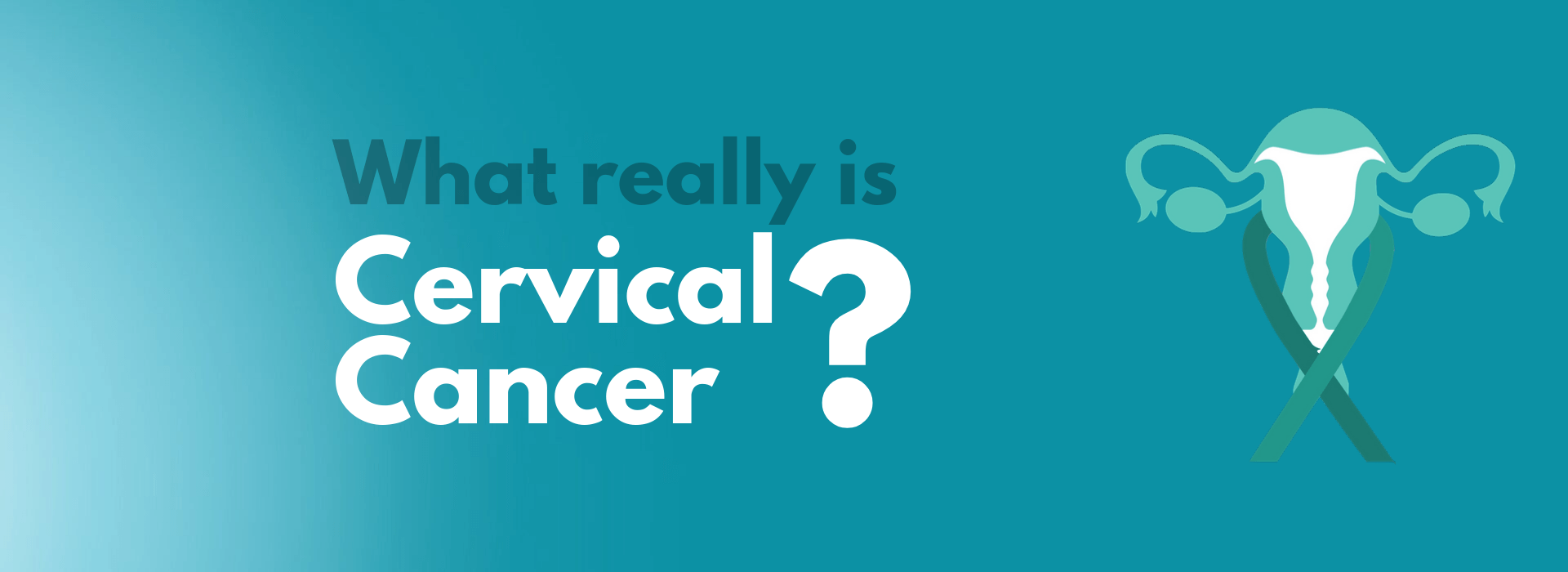
07 Oct What really is Cervical Cancer?
The third of its kind, this blog talks about the progression and development of the infection once it turns into invasive cancer.
Cancer as a disease impacts the cells of our body in a way due to which they start to grow uncontrollably, crowding over healthy cells. Every cell in our body has a specific role to perform, but, when cancerous cells start to grow, they hinder this required working of the healthy cells giving rise to problems in the affected area of the body.
Cancer usually has a progressive growth. It starts from the initial place of origin and as it grows untreated, it starts affecting the nearby tissues and organs. Cancer also has the ability to spread to different parts of the body through blood, lymph or tissue, called metastasis.
CERVICAL CANCER
Cancer in the cervix, a part of the female reproductive system, is called cervical (SERR-vick-el) cancer. It is often confused with the term cervical (serr-VAIK-el), which means pertaining to the neck.
THE CERVIX
Cervix is the lower part of the uterus that connects it to the vagina. It is primarily made up of connective tissue and muscle and has two types of cells.
- Glandular cells – They are tall, column like and are found in the endocervix (the part of the cervix leading to the uterus). These are involved in the production of cervical mucus.
- Squamous cells – They are flat and thin and are found in the ectocervix (the part of the cervix leading to the vagina) and the vagina.
Cancer of the cervix impact these cells. They can be found in the form of carcinomas (malignant cancer cells) divided primarily into the following types,
- Squamous cell carcinomas – Nine out of ten of cervical cancers are found to be squamous cell carcinomas. As the name suggests they affect the squamous cell types in the vagina.
- Adenocarcinomas – They form from the mucous producing glands and have become more common in the last few years.
- Adenosquamous or mixed carcinomas – These are the least common type of cancer and has the properties of both.
STAGES OF CERVICAL CANCER
The onset of cervical cancer begins with changes and abnormalities in the cells of the cervix, commonly known as dysplasia. These abnormal cells over a period of time may develop into full-fledged invasive cancer.
Just like any other type of cancer, stages of cervical cancer can be defined on the basis of the extent of the spread of the cancer.
- Carcinoma in Situ – It marks the very beginning of cervical cancer in which abnormal cells are found in the lining of the cervix. These abnormal cells have the potential to become cancerous in the future. It is also sometimes referred to as Stage 0.
- Stage 1 – By this time, the abnormal cells have developed into cancer. But, it is still restricted to the cervix. Stage 1 can further be classified into sub-stages depending on the size of the tumor. The tumors during this stage generally range from anywhere near 3 millimeters to 4 centimeters wide.
- Stage 2 – The cancer has spread to the surrounding tissue yet is contained within the pelvic wall. It still has not reached the lower third of the vagina.
- Stage 3 – The pelvic wall and the lower third of the vagina have been affected by the cancer in this stage. The cancer may also have started to affect the functioning of the kidneys.
- Stage 4 – By the time the cancer reaches the fourth stage it has spread beyond the pelvic wall and can also be seen in the lining of the bladder or the rectum. The cancer may also have started to metastasize and reach other parts of the body like the liver, lungs, bones and lymph nodes.
Cervical cancer may also reappear after it has been treated. The recurrence of the cancer can happen in any part of the body other than the cervix.
We cannot reiterate enough that cervical cancer is the only preventable cancer, provided it is detected and treated timely. Why delay it any further! Why take the risk of being just another statistic! Take the reign of your health into your own hands
Visit your gynaecologist now and help CAPED create a Cervical Cancer Mukt Bharat.
Author : Taru Medha (CAPED Intern)
Bibliography/Resources :
http://cancerindia.org.in/cervical-cancer/
https://www.cancer.gov/types/cervical/patient/cervical-prevention-pdq


